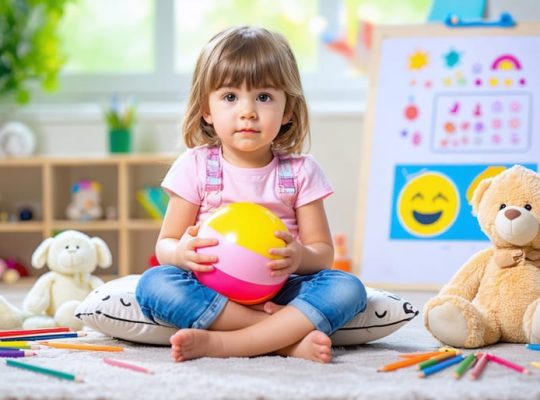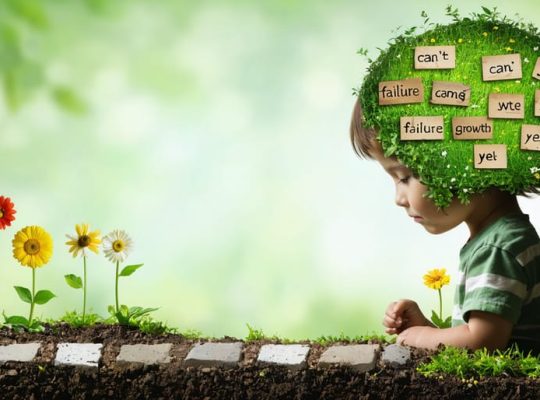Emotional well-being shapes every aspect of a child’s development, from their earliest interactions to their ability to form lasting relationships and navigate life’s challenges. As parents and educators, understanding this fundamental aspect of mental health empowers us to nurture resilient, confident, and emotionally balanced children who can thrive in today’s complex world.
Recent research reveals that emotional well-being encompasses more than just feeling happy – it’s a dynamic state where children can recognize, express, and manage their feelings while showing empathy toward others. This delicate balance of self-awareness and social connection forms the foundation for lifelong mental health and successful relationships.
Whether you’re a parent seeking to support your child’s emotional growth or an educator working to create a nurturing environment, grasping the essence of emotional well-being is your first step toward making a meaningful difference. By understanding its core components – self-awareness, emotional regulation, resilience, and social skills – you can help children develop the emotional intelligence they need to face life’s challenges with confidence and grace.
Let’s explore how emotional well-being shapes child development and discover practical strategies to foster this crucial aspect of mental health in the young minds we nurture.
What is Emotional Well-being?

Key Components of Emotional Well-being
Understanding emotional well-being requires recognizing its key building blocks, which work together to create a stable foundation for children’s mental health. The first essential component is self-awareness, which helps children identify and understand their own feelings, thoughts, and reactions. When children can recognize their emotions, they’re better equipped to express themselves and seek support when needed.
Emotional regulation follows as another crucial element, enabling children to manage their feelings in healthy ways. Think of it as an internal thermostat that helps maintain emotional balance. Just as we teach children to tie their shoes, we must guide them in developing these vital regulation skills through practice and patience.
Emotional resilience stands as the third pillar, empowering children to bounce back from challenges and adapt to change. This isn’t about avoiding difficult feelings but rather developing the strength to work through them constructively.
Other key components include healthy relationships, which provide emotional support and security, and positive self-esteem, which helps children maintain confidence in their abilities. Social awareness also plays a vital role, helping children understand and empathize with others’ emotions, leading to stronger connections and better communication skills.
Remember, these components don’t develop overnight – they require consistent nurturing and support from caring adults who understand their importance in a child’s overall well-being.
Signs of Healthy Emotional Well-being in Children
Children with healthy emotional well-being display distinct behaviors that vary across age groups. In toddlers and preschoolers, you’ll notice they readily explore their environment, show curiosity, and recover quickly from minor upsets. They’re comfortable expressing both positive and negative emotions and seek comfort from trusted adults when needed.
School-age children with good emotional health typically maintain friendships, show empathy towards others, and can articulate their feelings using age-appropriate language. They demonstrate resilience when facing challenges and show a general sense of optimism about daily activities and their future.
As child psychologist Dr. Sarah Chen notes, “Emotionally healthy children have the ability to regulate their emotions and bounce back from disappointments. They’re not afraid to try new things and learn from their mistakes.”
In teenagers, signs of emotional well-being include having a stable sense of self, maintaining meaningful relationships with peers and family, and showing interest in activities they enjoy. They can recognize and manage their emotions effectively, seek help when needed, and display appropriate problem-solving skills.
Common indicators across all age groups include:
– Regular sleep patterns
– Healthy appetite
– Ability to concentrate
– Willingness to participate in social activities
– Age-appropriate independence
– Positive self-expression
– Emotional flexibility
– Regular engagement in play or hobbies
Remember that each child develops at their own pace, and these signs may manifest differently depending on individual personalities and circumstances.
The Communication-Wellbeing Connection

Creating Safe Spaces for Emotional Expression
Creating safe spaces for emotional expression is fundamental to supporting children’s emotional well-being. When children feel secure in expressing their feelings, they’re better equipped to navigate big emotions and develop healthy coping mechanisms.
Start by establishing consistent “feeling check-ins” where children can freely share their emotions without fear of judgment. This might be during dinner time, before bedtime, or after school. Use simple prompts like “How did your heart feel today?” or “What made you smile or frown?”
Create dedicated physical spaces where emotions are welcome – perhaps a cozy corner with soft pillows, emotion cards, or a feelings journal. These spaces signal to children that it’s okay to feel and express their emotions fully.
Remember to model emotional expression yourself. When appropriate, share your own feelings and how you manage them. This shows children that all emotions are normal and helps them develop emotional literacy. Always validate their feelings with responses like “I understand why you feel that way” or “It’s okay to feel angry sometimes.”
Supporting Your Child’s Emotional Well-being
Daily Practices That Build Emotional Strength
Building emotional strength is like exercising a muscle – it requires consistent, daily practice. Simple activities can help boost emotional well-being and create lasting positive habits. Start each day with a gratitude practice, encouraging your child to name three things they’re thankful for. This helps develop a positive mindset and resilience.
Create regular “feelings check-ins” throughout the day, using simple questions like “How is your heart feeling right now?” These moments allow children to recognize and express their emotions safely. Deep breathing exercises, especially during transitions or before challenging tasks, help children learn self-regulation.
Physical activity, whether it’s dancing, playing outside, or doing yoga, releases feel-good hormones and reduces stress. Setting aside dedicated time for creative expression through art, music, or storytelling provides healthy emotional outlets. End each day with a peaceful bedtime routine that includes gentle conversation about the day’s experiences.
Remember that consistency matters more than perfection. These practices become more natural and effective over time, helping children develop strong emotional foundations.

Nurturing emotional well-being is an ongoing journey that requires patience, understanding, and consistent support. As we’ve explored, emotional well-being encompasses self-awareness, healthy relationships, coping skills, and the ability to express feelings appropriately. Remember that every child’s emotional development is unique, and there’s no one-size-fits-all approach.
By creating safe spaces for emotional expression, practicing active listening, and modeling healthy emotional behaviors, we can help children build strong foundations for lifelong emotional health. Continue to educate yourself, seek professional guidance when needed, and maintain open communication with your child.
Most importantly, celebrate small victories in emotional growth and remember that it’s okay to make mistakes along the way. Together, we can foster environments where children feel understood, supported, and equipped to handle life’s emotional challenges with confidence and resilience.







